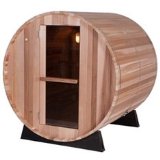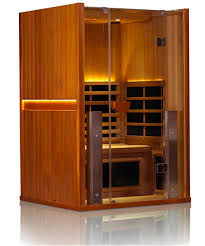Home Infrared Saunas – Safe and Energy Efficient
Home infrared saunas are said to have the ability to penetrate the skin more deeply than a traditional sauna thereby giving the body a better detox of impurities.
Some doctors say bupkiss to that claim but these units, also known as far infrared saunas, are appealing in traditional ways such as helping to boost your immune system, soothe aching joints, and a host of other health benefits.
Traditional hot rocks saunas were developed in Finland centuries ago, while home infrared saunas are relatively new, being invented in Japan in 1965.
The far infrared ray is a form of electromagnetic light energy that heats the body but not the surrounding air. When a longer wavelength of light warms an object without warming the air between the source and the object it is called radiant heat, or more correctly, Far Infrared Radiation (FIR).
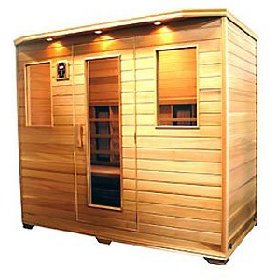
Infrared vs. Conventional Saunas
Are far infrared home saunas safe? Completely! Properly used, the dangers of infrared saunas are zero.
Far infrared is used in hospitals to warm preemies in incubators! It will also not cause tanning, or skin cancer, and people who feel that traditional saunas are too hot for them will enjoy these saunas.
Infrared home saunas are designed to heat the body and not the air, they operate at lower temperatures than conventional saunas, in the 100°F to 130°F range versus 180°F to 220°F for hot rocks saunas.
Because of this difference, the far infrared sauna offers these key advantages:
SEE OUR TOP 5 INFRARED SAUNA BRANDS COMPARED HERE!
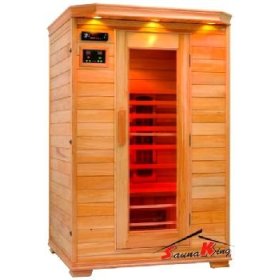
- No hot surfaces in the sauna room
- Lower temperatures make infrared safer for those with health risks (such as diabetics, etc)
- Far infrared induces two to three times more sweating, which relates to increased calorie burn and cardio conditioning
- The lower temperature of the air is easier to breath
- Infrared technology uses no water, so your home sauna stays cleaner and you won’t be battling mildew or other types of problems associated with a steam room
- FIR saunas require 90% less electricity to operate than a conventional electrically heated sauna
- The warm-up time is only 10 minutes, versus 30 to 45 minutes for a conventional sauna
Another cost-saving feature is the purchase price. Because they are constructed with Hemlock fir, which is a strong, stable wood, these home infrared saunas are less expensive than cedar wood saunas.
Cheap Saunas Under $2000 – Reviews of 5 Affordable Infrared Units
Ceramic vs. Rod-Shaped Heaters
As for the heater, far infrared saunas use ceramic or metallic elements instead of an electric, gas or wood fired heater.
A conventional home sauna uses one large heating unit, while 2-person, 3-person, and 4-person far infrared saunas usually come with five or six heaters situated around the seating area to better target the body.
Ceramic Infrared Elements Improve Energy Output
Older models of home infrared saunas used metallic, rod-shaped heating elements. The newer designs are greatly improved and come with concave, ceramic emitters.
To understand the difference between the two, think of the rod-shaped elements as what you see in your oven.They offer a heating efficiency ratio of about 50%.
Compare that to the wider, flat panel ceramic design which gives off as much as 95% of energy output as far infrared waves. The rod-shaped heater is producing more heat and less infrared, and that’s not what you want.
While heated air in a traditional sauna can be hard on the lungs and skin, these home infrared saunas and their far infrared electromagnetic waves are not only completely safe but provide greater health advantages with fewer side-effects.
Understanding and Avoiding Infrared Sauna Side Effects
Infrared Saunas
Sauna Heaters
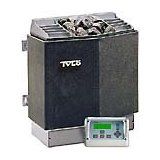
How to Install a Wood Sauna Heater
Sauna Kits
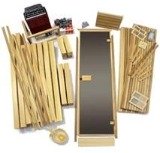
Buying Guide
